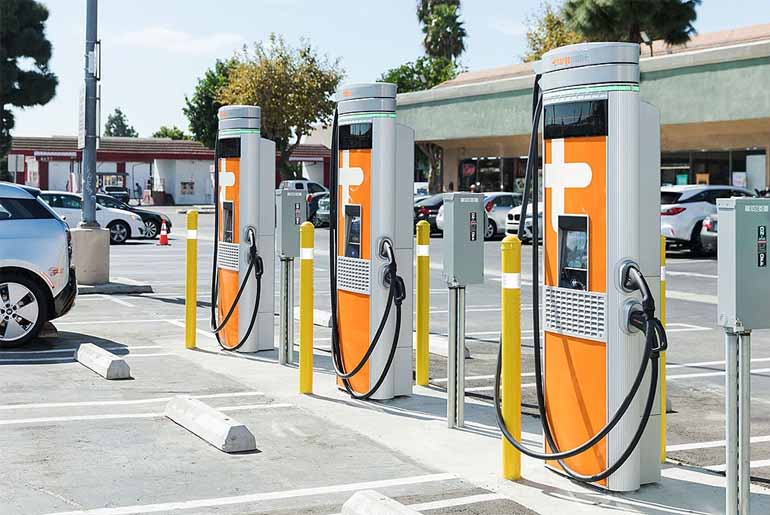The rise of fast charging stations is redefining what’s possible for electric mobility. Once seen as a limitation, charging time is rapidly shrinking, allowing EV drivers to travel farther with shorter stops and greater convenience. These high-powered solutions enhance user confidence and accelerate the broader adoption of electric vehicles by addressing one of the most common concerns—range anxiety. As urban planners, automakers, and energy providers collaborate on expanding fast charging networks, the shift toward cleaner transportation becomes more practical and appealing. This evolution paves the way for a future where electric travel is as seamless and accessible as traditional fueling.
Why Fast Charging Stations Matter Now
Electric vehicles (EVs) are ushering in a new era of transportation that promises lower emissions and quieter streets. Yet, even as EV technology improves, the fear of running low on charge, or “range anxiety,” continues to be a significant barrier for many potential drivers. Fast charging stations are crucial in bridging this gap, rapidly recharging, and making all-electric driving far more practical for daily commutes and long-distance trips. For businesses seeking robust solutions, investing in advanced DC fast charger technology for commercial use accelerates vehicle turnaround time, customer satisfaction, and loyalty.
Unlike conventional charging outlets, which can take several hours to deliver a full charge, fast charging stations drastically reduce wait times—often replenishing a battery up to 80% in 30 minutes or less. This innovation ensures that EVs are a viable alternative for urban drivers and those who rely on their vehicles for travel, work, or logistics. As infrastructure grows, fast charging technology is becoming the linchpin that supports a broader and more diverse EV user base.
The Rise of Fast Charging Technology
The advancement of fast charging technology is transforming expectations for electric mobility. Pioneering developments in DC fast charging now deliver direct high-voltage currents to batteries, bypassing the slower onboard charging systems. This leap in speed has become essential as automakers roll out EVs with larger batteries and faster charging capabilities. The mushrooming network of fast chargers is central to the ongoing EV revolution, particularly for highway corridors and busy commercial hubs.
Interoperability is also advancing, allowing different EV brands to use the same fast charging stations, and new payment and reservation systems are reducing bottlenecks. These changes are vital as the number of electric vehicles on the road continues to climb. Each improvement in speed, connectivity, and accessibility brings the industry closer to mainstream adoption.
To ensure a seamless experience, public and private entities work together to deploy new stations, improve ease of access, and support consistent operational standards. This collaborative spirit ensures that as new vehicles hit the road, the infrastructure is ready to support their needs.
Key Factors Influencing Station Placement
Chargers are placed along highways, busy areas, malls, and workplaces to improve accessibility. Station grid capacity ensures reliability and scalability. Proper planning balances usage, needs, and infrastructure, benefiting drivers and utilities. Using renewable sources like solar reduces environmental impact. Data analytics predict peak times to optimize availability and reduce waits. Partnerships speed up deployment by sharing costs. User-friendly payments and signage improve the experience, promoting electric vehicle adoption.
Benefits for Businesses and Local Communities
For businesses, integrating fast charging is an opportunity to attract new clientele, distinguish themselves as sustainability leaders, and even retain employees who drive electric vehicles. Charging stations can increase foot traffic in retail areas and extend visitor dwell time, ultimately driving local economic activity.
Meanwhile, local governments see EV infrastructure investments as a dual benefit—sparking economic development and reducing greenhouse gas emissions. Grant programs, zoning incentives, and public-private partnerships make it easier for small towns and major cities to expand their charging networks and realize broad societal benefits.
The Role of Public Policy and Private Innovation
Government involvement through funding, regulations, and coordinated planning has accelerated the growth of charging infrastructure in key markets. Incentive federal, state, and municipal programs encourage property owners, business leaders, and developers to integrate charging hubs in new construction and retrofits. At the same time, private enterprise continues to innovate—unveiling new hardware solutions, more resilient station designs, and smarter software platforms to balance demand across the grid and minimize downtime.
Sustainability and the Grid of the Future
As the number of EVs soars, powering fast charging stations increasingly intertwines with renewable energy solutions. Solar canopies atop charging stations and co-located battery storage are emerging as best practices for sustainable operation and resilience. These integrations help level out grid demands while decreasing the carbon footprint associated with electric transportation.
Future-proofing EV infrastructure also means anticipating heavier grid loads and ensuring upstream power networks can handle peak demand without disruptions. Utilities, regulators, and charging technology providers are working closely to build flexibility through next-generation load management and energy storage solutions.
What Drivers Should Look For In Fast Charging Stations
- Compatibility: The station should support your vehicle’s charging standard, whether CCS, CHAdeMO, or another widely adopted protocol.
- Availability: Accessing real-time occupancy data via charging apps or navigation systems helps drivers plan efficient trips.
- Reliability: Stations with a proven track record of maintenance and support offer confidence for travelers, particularly on long journeys.
- Location amenities: Stations integrated with restrooms, food outlets, and retail services make charging stops more comfortable and productive.
These features can distinguish between a seamless travel experience and a frustrating delay, especially as EVs become a routine choice for work and pleasure.
Looking Ahead: The Next Wave of Fast Charging
Emerging trends such as wireless charging, vehicle-to-grid (V2G) capabilities, and even ultra-fast “flash” charging stations are poised to make e-mobility more convenient. Smarter software will further enhance user experiences, while real-time feedback and data analytics will help network operators improve reliability and efficiency. Engaging communities and drivers in the feedback loop will be critical as the landscape evolves.
The ultimate goal is a clean, reliable, and accessible charging network that transforms the everyday driving experience—helping new generations of drivers confidently switch to electric.
Conclusion
Fast charging stations stand at the forefront of the electric mobility revolution, bridging the gap between technological potential and everyday practicality. They address core adoption barriers by shrinking charging times, expanding network coverage, and integrating renewable energy solutions while shaping a more sustainable transportation ecosystem. Continued collaboration among policymakers, industry leaders, and communities will ensure this infrastructure grows with rising EV demand. As innovations like wireless charging and vehicle-to-grid capabilities mature, the vision of a seamless, efficient, and universally accessible EV experience is no longer a distant goal—it’s an accelerating reality.







